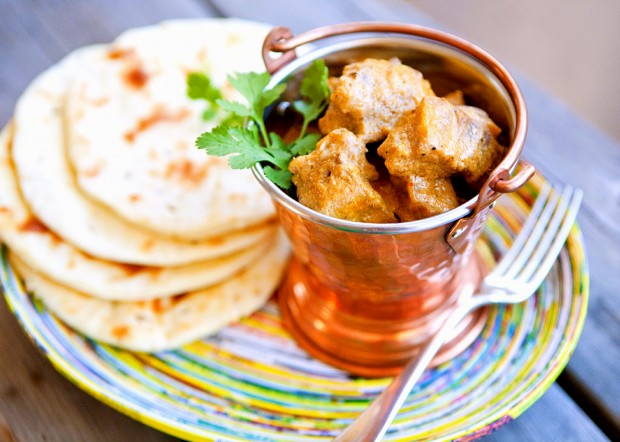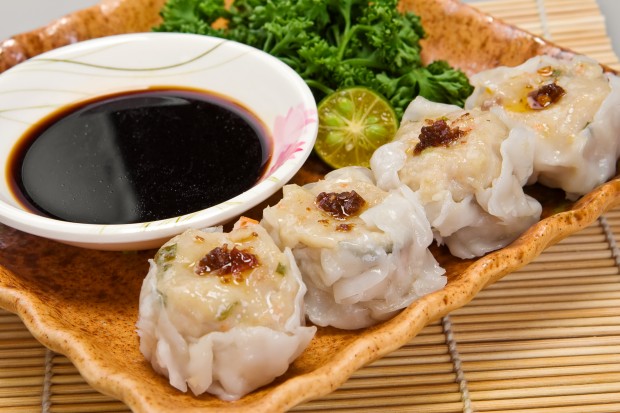
 As a food blogger specialising in creating Indian food recipes, I very often get people telling me that they are unsure about cooking food that is not familiar to them. So what do the words ‘ethnic cooking’ mean to you?
As a food blogger specialising in creating Indian food recipes, I very often get people telling me that they are unsure about cooking food that is not familiar to them. So what do the words ‘ethnic cooking’ mean to you?
The word ‘ethnic’ itself has been the subject of much debate, and there are heated arguments about the use of the word in several contexts, cooking being one of them. The words ‘ethnic cuisine’ by their very nature are unclear. However, for the sake of simplicity, I will define ‘ethnic cooking’ or ‘ethnic cuisine’ here as food that is not part of one’s own culture. We all grow up with a style of cooking that is familiar to us, and is the starting point for our own culinary adventures. So, in essence, ethnic cooking is a style of cooking and eating that is different from our usual cuisine. We very often classify ethnic cuisines as being exotic; from countries and continents that are not our own.
This definition obviously does raise several debates. Can Italian food, for example, be classified as ethnic food? I could go on about whether pizza is ethnic food, just the same as butter chicken. But, for now, we’ll ignore the semantics and concentrate on the food.
A lot of people are exposed to various cuisines through travel. Travelling is probably the single most useful way of broadening our culinary experiences and getting to know food cultures that may be alien to us. Having travelled widely, I do love trying out unfamiliar food by just walking down the street and eating anything I fancy that smells appetizing. This has its occupational hazards (Delhi belly, anyone?) but at the same time, is probably the best way to experience eating ‘authentic food’. Travelling, however, may not necessarily be everyone’s cup of tea, but this does not mean that you cannot bring interesting and exotic tastes of faraway lands into your own kitchen.
So, how do we start with ethnic cooking at home?
The Magic of the Internet
In this technologically advanced world, your best friend is Google (or Yahoo, or Bing... you get my drift). Once you identify a style of cuisine that you like, start by researching it. Read ethnic food blogs, in particular. Many ethnic food bloggers will be people living away from home themselves, and have developed a unique style of cooking food from their own country, albeit with a local twist. They will have recipes that will ease you into the world of ethnic cooking without being overwhelming or asking for huge deviations in the way you cook. Starting with fusion food also gives you an insight into the various styles of cooking that will then, in turn, lead you to be more adventurous in your cooking.
Check Out Your Library's Food Resources
Another easy way of taking the plunge into ethnic cooking is by heading to your local library. Libraries are treasure troves of cookbooks and magazines, usually arranged by countries and cooking styles. Start with familiar authors and publishers. So, for example, if you want to start off with Indian cooking, a cookery doyenne like Madhur Jaffery has perfect beginner books.
The BBC publishes some fantastic Foolproof Cookery books. These books break down the style of cooking, plus offer up easy to follow recipes made with ingredients that are available in your local supermarkets. Borrow a few books that look interesting and browse through them. Be sure to read the introductions, in particular, as they will have a lot of information that is invaluable to a beginner cook, particularly on sourcing ingredients and the kind of equipment that you may require.
Take a Cooking Class
After all this, if you are still unsure about ethnic cooking, then it may be time to take a class or two. Cooking classes are not only excellent sources of information, they are also usually hands on, which means that you will be guided through techniques and style. You will also get to taste the end result, in order to get an idea about how the food should taste.
Do not hesitate to ask plenty of questions during these sessions, in fact, you will learn more by asking these questions, as will your fellow students. When I teach Indian cooking classes, I encourage my students to be open with their feelings and doubts about this style of cooking. Students asking questions helps me clarify my own approach to teaching about food that may be unfamiliar to people.
Classes, and by extension their instructors, also have the advantage of pointing you towards the right kind of equipment to buy, of recommending a few books to peruse, and showing you places where you can source the ingredients to cook at home. Many classes also offer continuing support as you navigate your way through new cuisines
Some Ethnic Cooking Tips
In conclusion, a few points to think about:
- Be adventurous. Faint heart never cooked ethnic food J
- Don’t try to do too much at once. Start by changing it up one thing at a time. Perhaps try a new spice, a new vegetable or an ethnic technique to make a classic dish.
- You don’t have to have tons of fancy equipment to start cooking ethnic food. More often than not, you will find that whatever you have in your kitchen will suffice and can be repurposed to adapt to a different style of cooking.
- Don’t worry too much about being authentic. Every recipe in the world is adapted to suit the taste of the maker. There are very few recipes in the world that are truly authentic. Instead, concentrate on trying out new flavours that you enjoy.
- And finally, have fun. Cooking is all about having fun and being creative in the kitchen. Cooking ethnic food is just about finding a new way to enjoy yourself and shaking up your tastebuds in the process.
Blogging 101: Exploring Ethnic Cooking was written by Michelle Peters-Jones. Michelle stumbled into the world of food via her appearance on the BBC's Masterchef UK. She was born and brought up in India, and has lived in England for several years. She is currently based in Edmonton, AB from where she authors Food, Football and a Baby and teaches Indian cooking classes.
Connect with Michelle on Twitter: @michpetersjones or Facebook: Food, Football and a Baby
The first image on the page is courtesy of Michelle's friend, Connie Nelson of Mirabelle Macarons in Edmonton









Call it “Food Across the Cultures” or “Cooking Across the Cultures.” Food gets inter-disciplinary! ;o)
Beautifully written and lovely pictures..
Thoughtful post, Michelle! Bravo!
🙂
Valerie
Love how you have broken this down! Great job, Michelle.
Very well written! I’m going to have another Indonesian cooking demo in Winnipeg
Thank you for the lovely comments everyone, and I really appreciate them.
Thanks so much to FBC for giving me this opportunity to write for them. I love working with you guys.
Thank you for this great post. I want to explore “ethnic cooking” and you’ve provided some great tips for getting started.